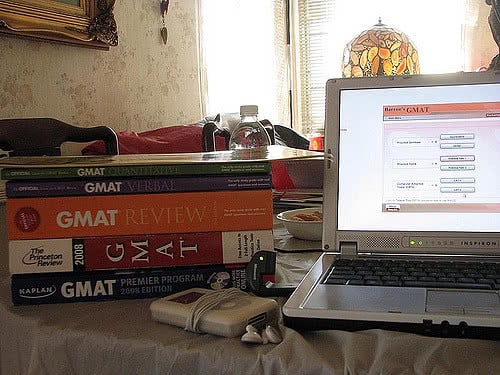
Flickr user itsv
If you’re planning on going after a Master’s in Business Administration, you’ve most likely heard of the GMAT. It’s an exam that’s central to your education at graduate school and your future in management. Here’s what you need to know about the GMAT:
Overview
The GMAT, or Graduate Management Admission Test, allows students to demonstrate the skills needed for a Master’s in Business Administration. The test tells your future potential schools how well you understand the material and predicts your future performance in the program. In most cases, your score is used in addition to your GPA and letters of recommendation from undergraduate school. Since the results can speak of a student’s performance in the years to come, admissions departments at business schools use the results as part of the application process.
If you’re interested in management, this is one you’ll want to be studying for.
GMAT Breakdown
Earlier this year, the GMAT was changed slightly. Some sections received fewer questions (and a shorter time limit). The sections include Integrated Reasoning, Quantitative, Verbal, and Analytical Writing Assessment. You’re welcome to take the sections in any order you choose.
Integrated Reasoning contains 12 questions and 30 minutes to complete them and focuses on graphics, analysis, and reasoning. The Quantitative section allows for just over an hour for 31 questions and asks about data and problem-solving. With 65 minutes, Verbal has 36 questions to concentrate on reading comprehension, sentence correction, and critical reasoning. The Analytic Writing Assessment is on a specific topic where you will analyze an argument. This section gives you 30 minutes. The total test time is just over 3 and a half hours with breaks (down from the 4 hours it used to be).
Students can score up to 800 on the GMAT. Each school has different requirements regarding scores, so if you’re interested in applying for a specific program or dream school, it’s important to look into those required or minimum scores before preparing for the test. (Though, obviously, aim well above the minimum for your best admission chances! You don’t want to be scraping by on this!)

Prepping for the GMAT
Once you know what programs you’re aiming for, you can start preparing for the GMAT. Now is the time to take practice exams and review your answers. Remember to also be keeping to the time frame that each section allows. After each practice test, you’ll want to concentrate more on your weaker areas. When you feel confident, it’s time to take another practice exam.
Working GMAT studying around work, family, school, and life can be difficult. It’s important to find a schedule that works for you early on so you are comfortable with the content and testing procedure when exam day arrives.
If you are interested in learning more about the GMAT or want to sign up for the exam, make sure you visit mba.com. You can find further information about the GMAT, study tools, practice tests, school information, and more on their website.
Use College Raptor to discover personalized college matches, cost estimates, acceptance odds, and potential financial aid for schools around the US—for FREE!





